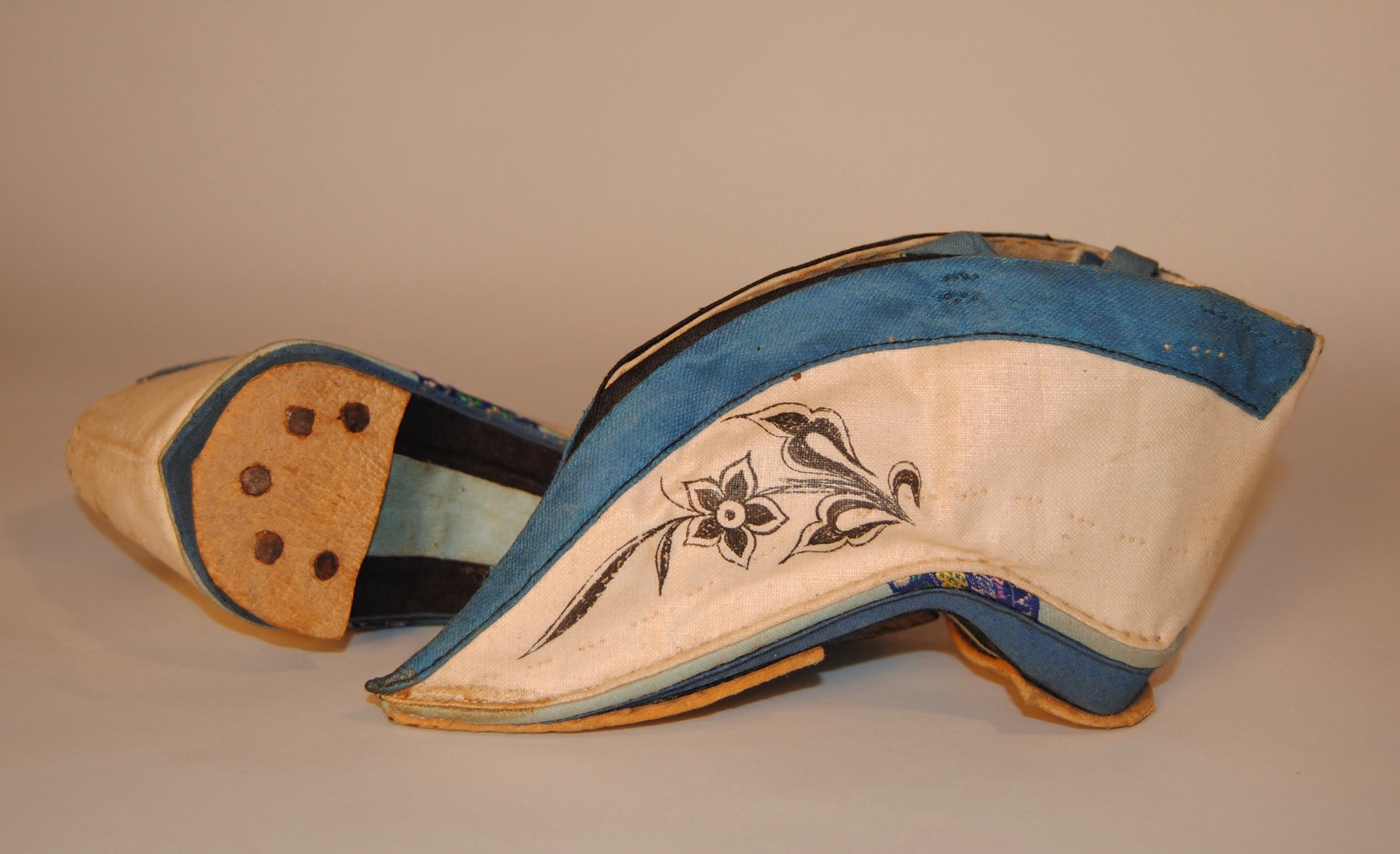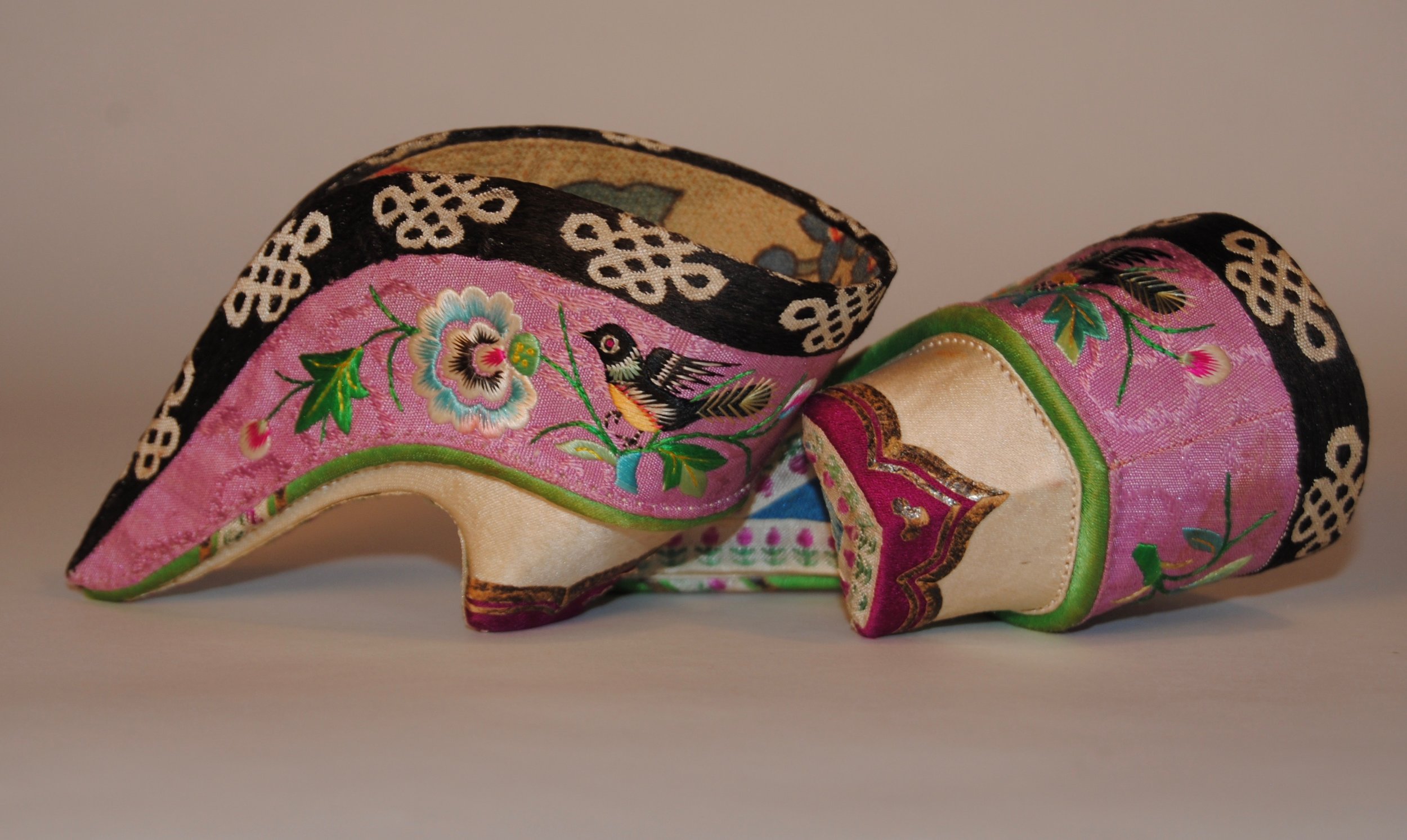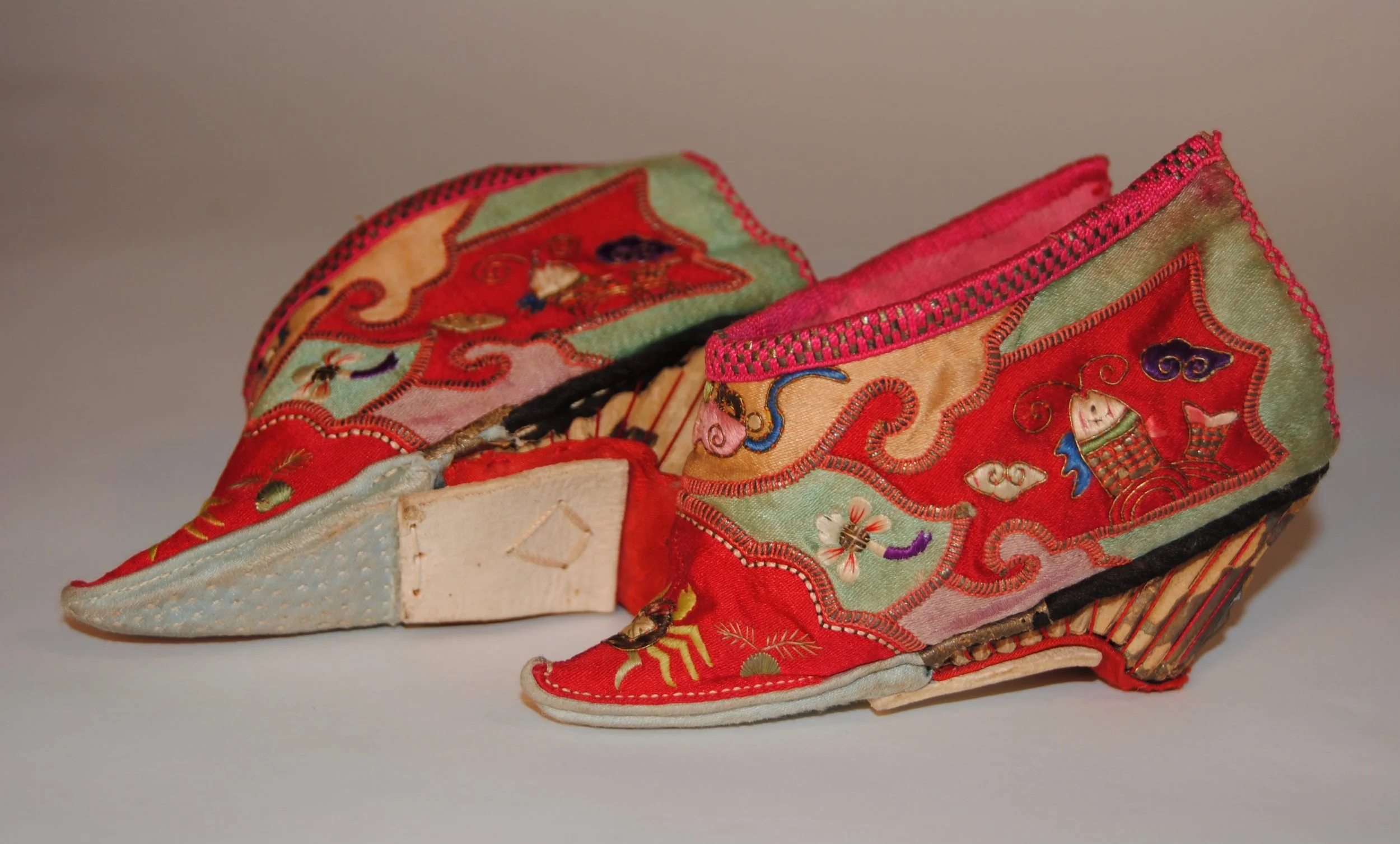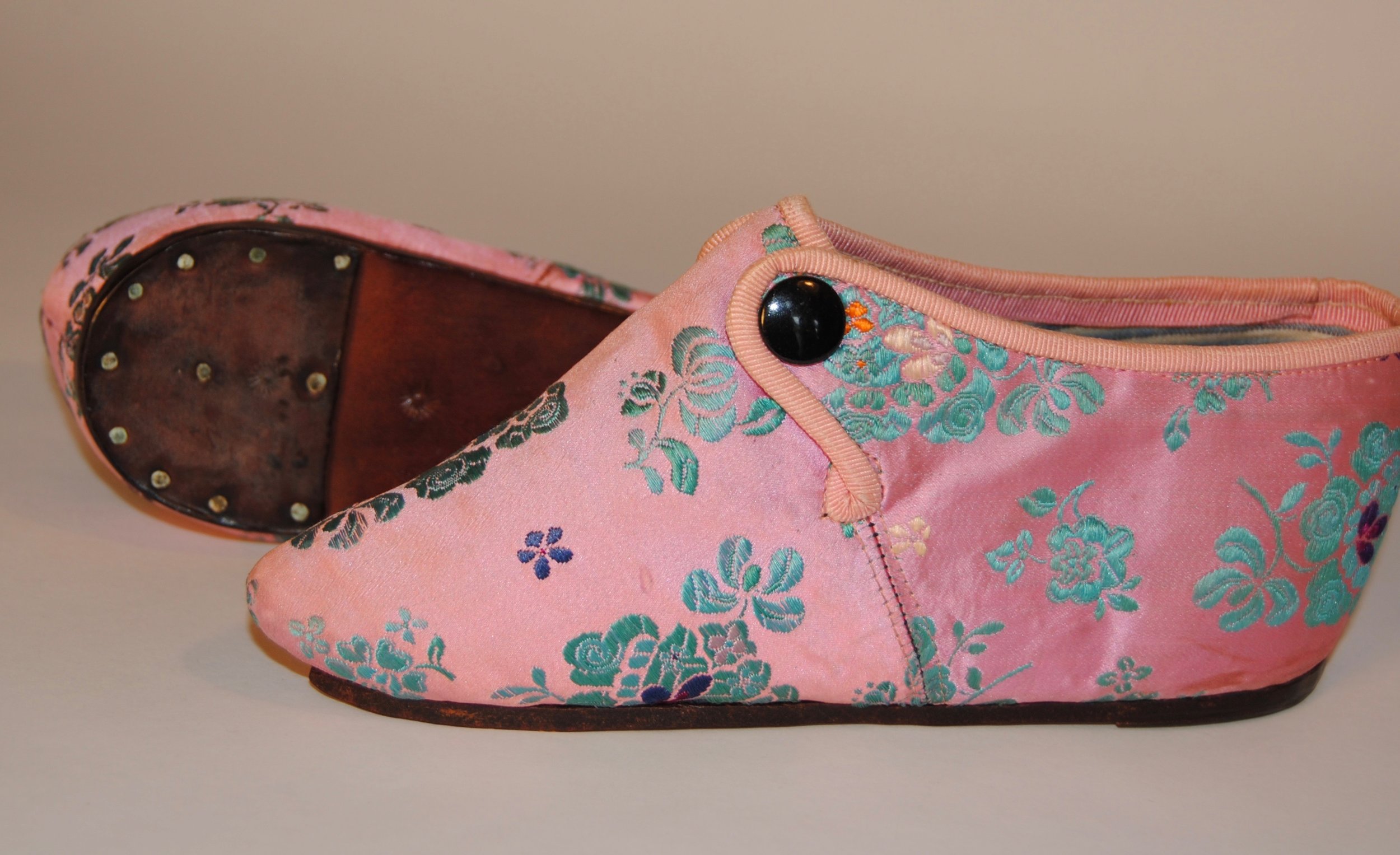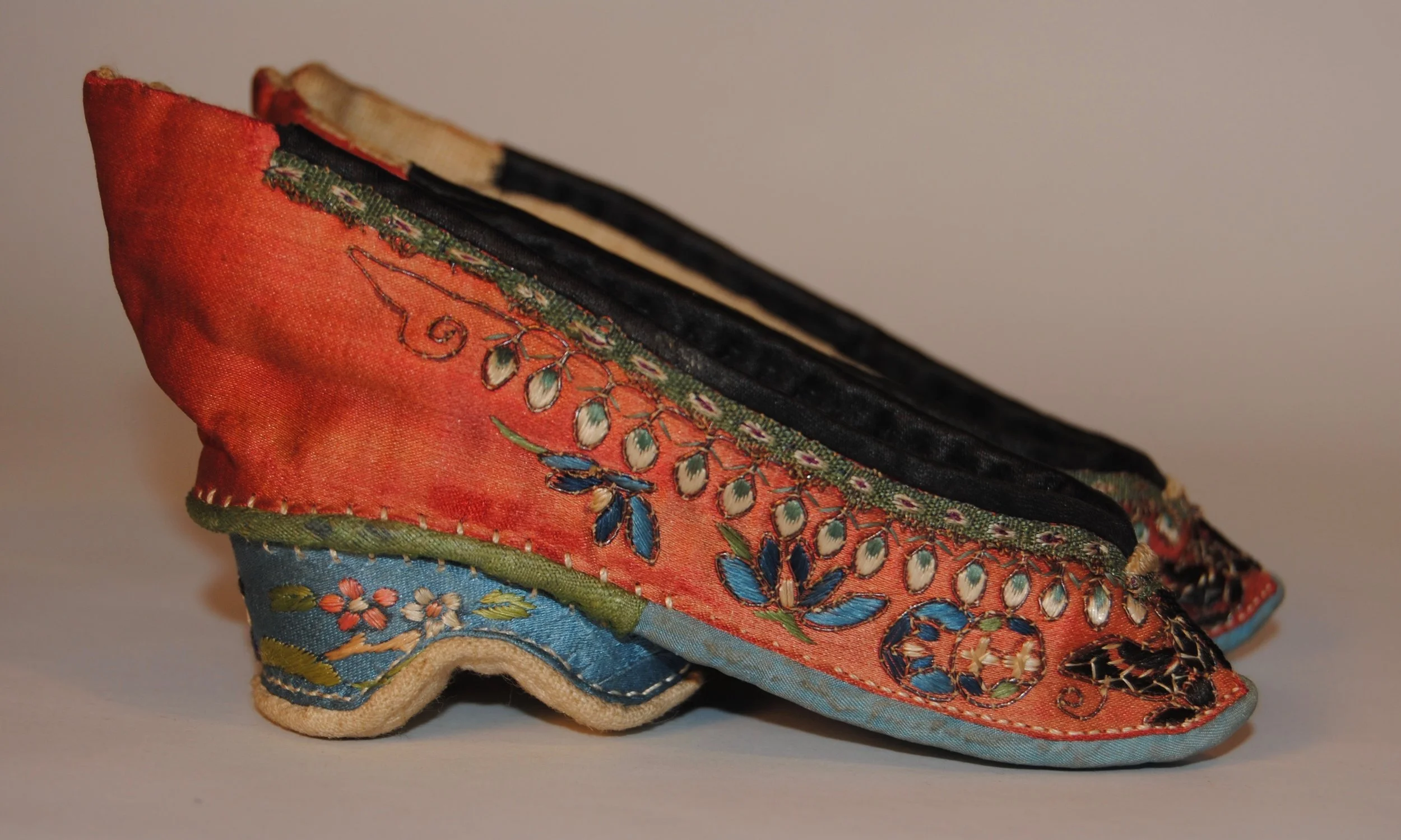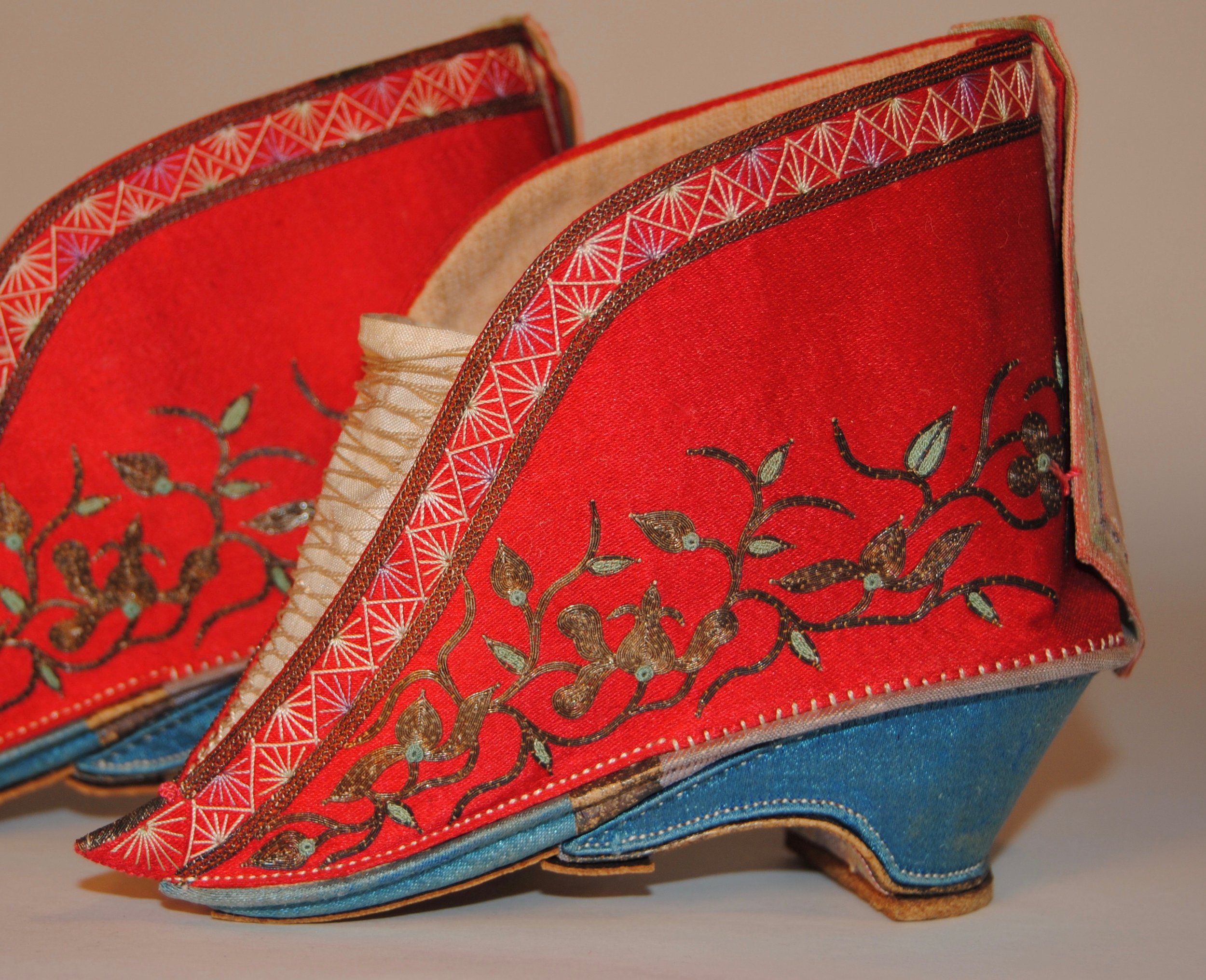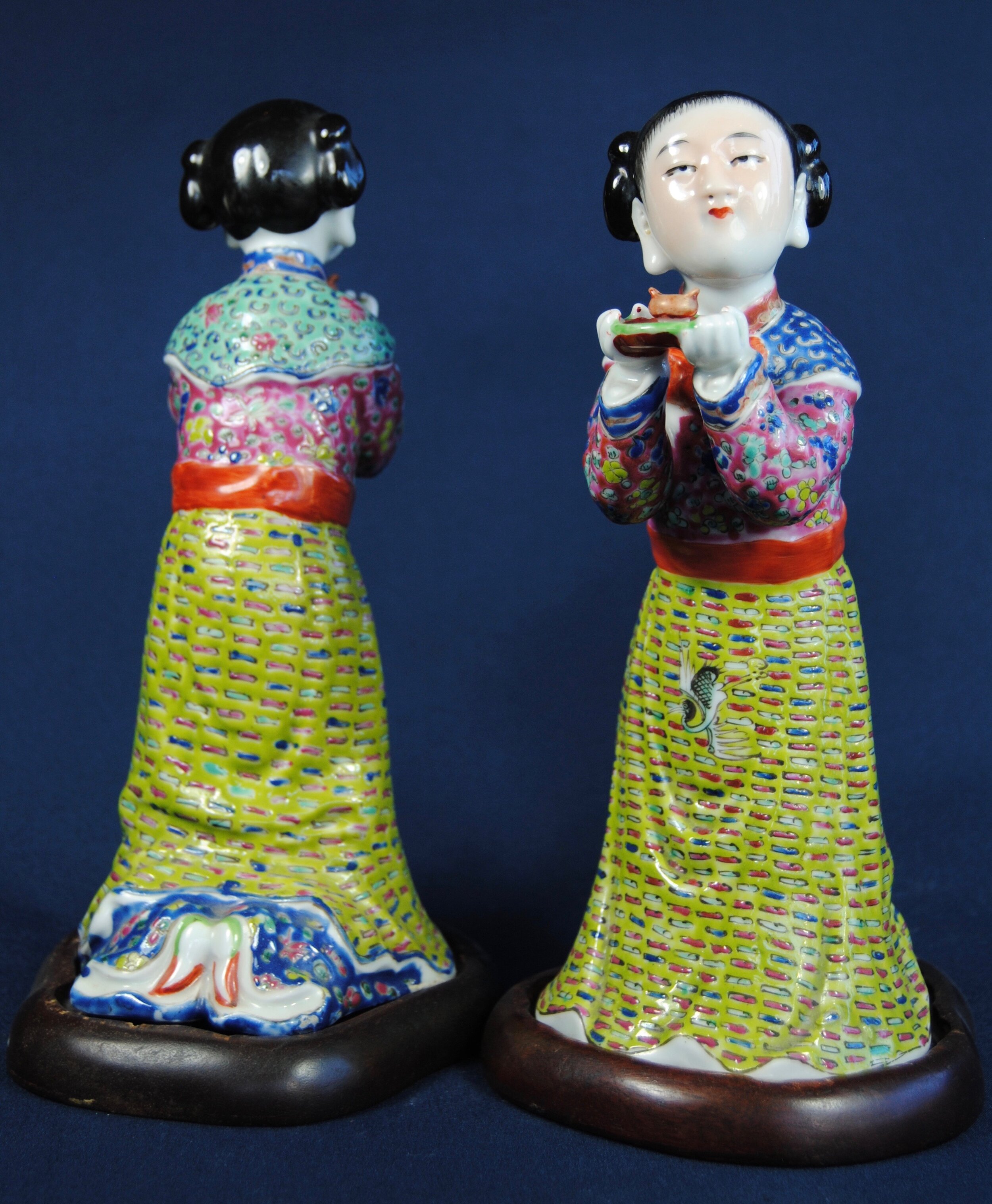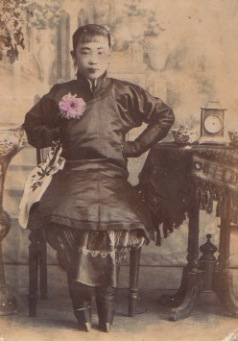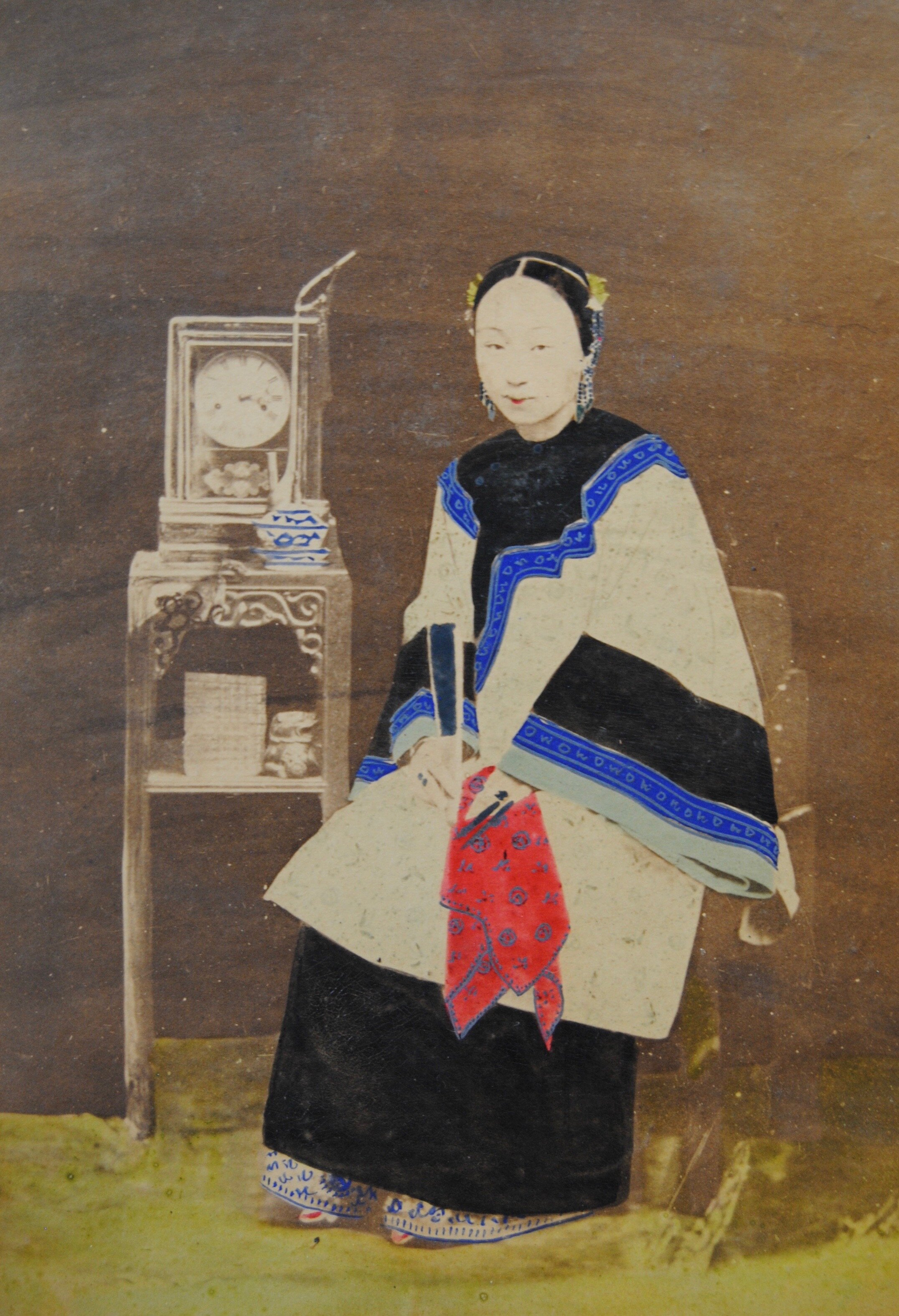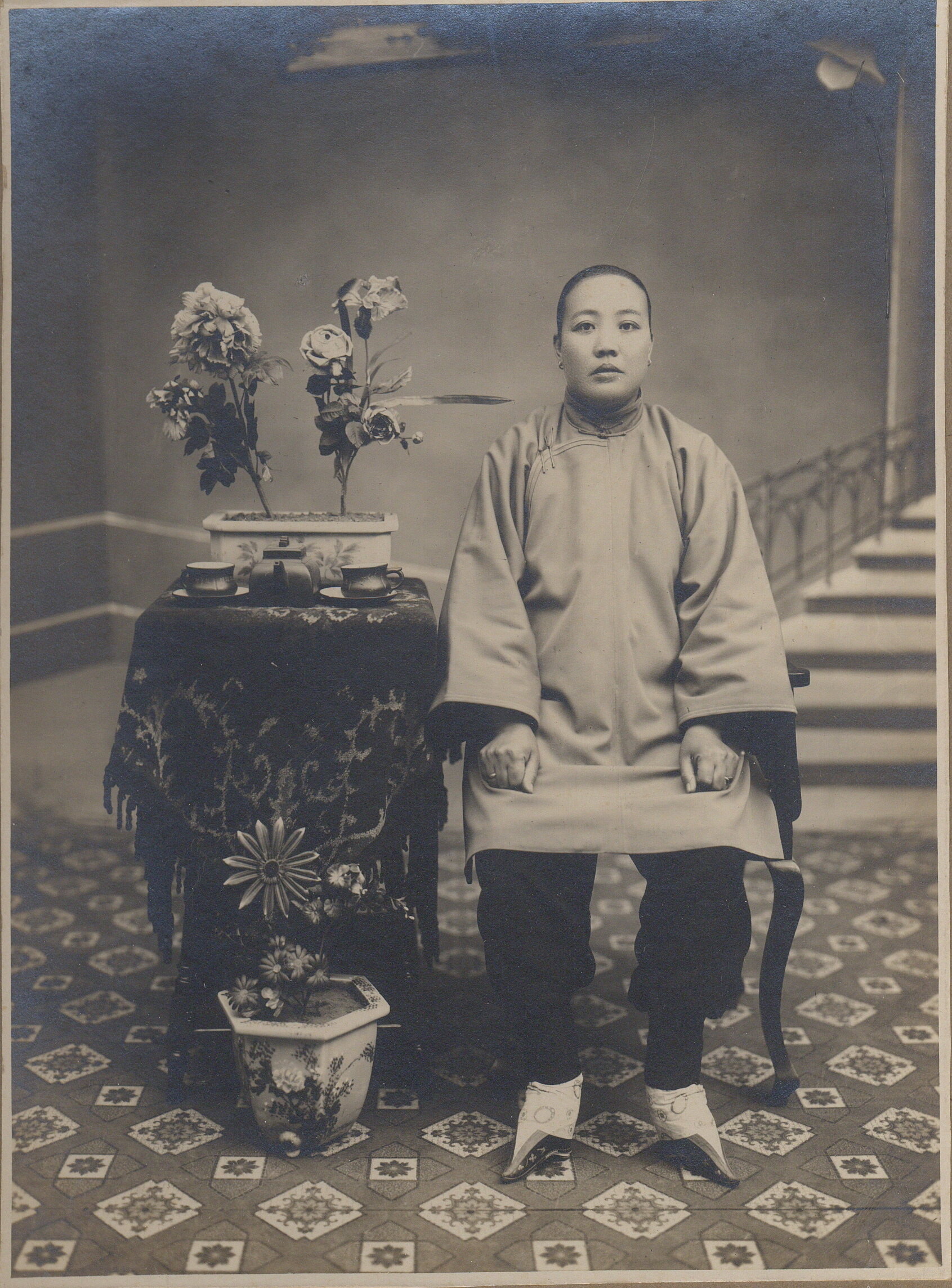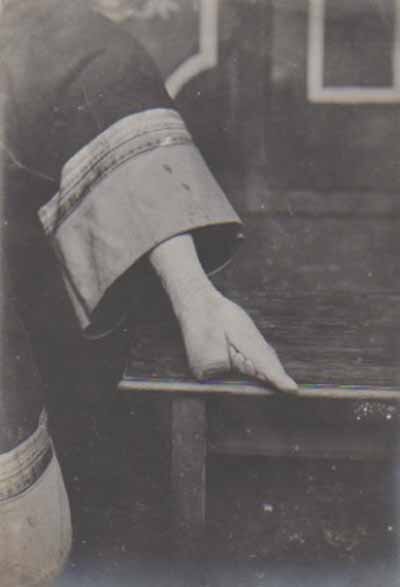
THE GOLDEN LOTUS
An unparalleled collection of art and artifacts investigating the curious custom of
Chinese Footbinding
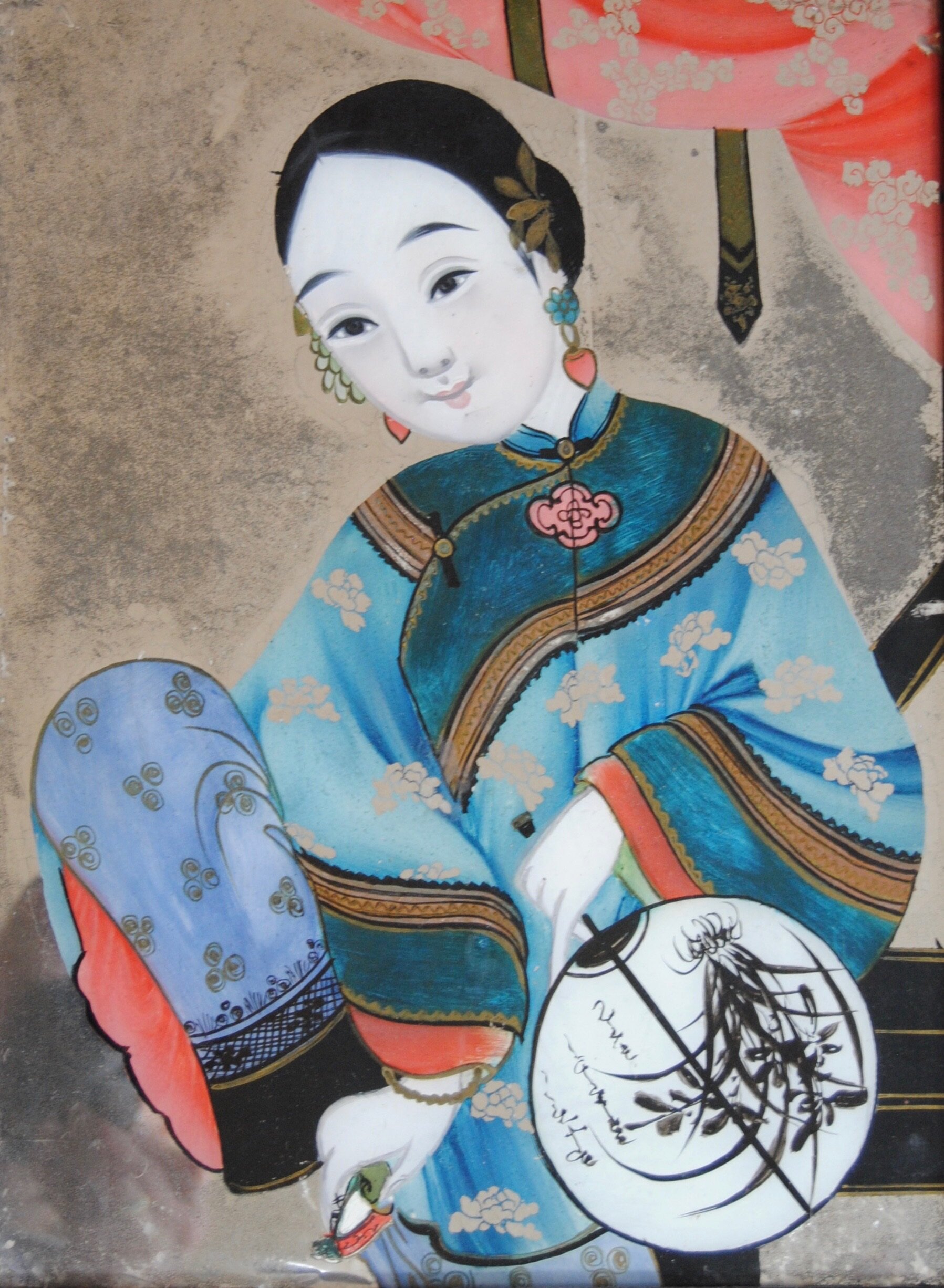
The Paul Marshall Prentice Collection of Chinese Bound Feet Shoes
For almost a thousand years, successive generations of Chinese women endured the painful body modification of footbinding, when as young girls, they suffered through a procedure in which their mothers systematically compressed and inhibited the natural growth of their feet, by binding them in constricting cotton bandages. The resultant esthetically altered feet, -miniscule, tapering and pointed, were reputed to resemble the closed blossom of a water lily or lotus flower, and so given the appellation, “lily” or “lotus” feet. Believed to be an enhancement, lotus feet were considered to be a highly valued attribute for a woman to possess, with the most coveted lotus foot, the absolute prized feminine adornment, determined to be an adult woman’s foot reduced to just three inches, -or less, in length…..a “golden lotus.”
Almost 800 years since footbinding first intrigued Western wayfarers to China, it has remained perpetually secured in the popular imagination as a bizarre cultural phenomena, and continues to fascinate, -and likewise, perplex. Viewed from a distance of time and cultural misunderstanding, footbinding to our Western eyes appears irrational, -looking somewhat like deranged behavior,- and so seems exotic and inexplicable. As one of the more extreme and persistent forms of body modification that any culture has devised to cosmetically alter the natural human form, footbinding has consistently baffled those looking for a motivation behind the practice, resulting in a multitude of theories. The most prevalent imputation, formulated in the 19th Century European Colonial discourse, has long been cast upon an ostensible Confucian patriarchal oppression of women. This theory asserts that women, subjected to the gender injustice of Confucianism were literally made lame, -by men’s inducement, -in order to attain their subjugation, and further, that the bound foot functioned as a coercive apparatus by which men controlled and exploited women’s sexuality. Some Western feminists have embraced this interpretation of footbinding and have characterized it as the worst oppression inflicted by Chinese patriarchy. In fact, footbinding has been so thoroughly co-opted by 20th Century feminist writers that ‘bound feet’ and ‘female oppression’ are considered by many to be almost synonymous. This assumption, however, begs the question: if Chinese women felt in any way oppressed by footbinding why did generations of women adhere to the practice century after century, and then, subsequently impel their own daughters to bind? For the demonstrable truth of the matter, ....however much it may arouse the indignation of some, ……is that women were footbinding’s originators, instigators, supervisors, and perpetuators.
In order to actually understand footbinding, one needs to know something of Chinese culture and history; it cannot be abstracted from its socio-cultural environment. Gender hierarchy was a fundamental component in the construction of Chinese culture, with the ideology of separate spheres, male and female, believed to be a natural product of biology. This social construction of gender was largely dictated by economic factors far different from those we experience today. Men and women were assigned different duties with the understanding that both sets of activities were necessary for the success of the family. Men were thought to be Yang; Positive, light, hard, outer, while women were understood to be Yin; negative, dark, weak, inner. The rise of footbinding among the gentry during the course of the Ming Dynasty (1368-1644), in limiting mobility and giving women’s bodies the appearance of being enervated, and fragile, re-enforced this spatial segregation of outer/inner. The bound foot was fundamental in the construction of this conception of femininity, in time becoming a symbol of elegance and enhanced social status. By the 18th Century, when footbinding was beginning to be emulated by the lower classes, the bound foot had been established as an aesthetic beauty standard that was a desirable and natural corporal state of being female, essential to the construction of feminine identity. Bound feet were not considered to be an infliction or deformity, but an embellishment, that amplified one’s cultural currency. Women were not helpless victims of footbinding, but were active agents who used the bound foot in an enactment of those beliefs. In binding their feet, women could be socially assertive. A failure to bind, could be social suicide.
At the time of footbinding’s eminence Chinese women were by and large silent on the subject, as the feet were considered to be an element of personal feminine hygiene and thus an intimate concern. The feet themselves remained concealed, the public exhibition of possessing lotus feet was restricted to the display of the ornamental shoes. Despite the limited Chinese textual sources that have survived, the search for footbindings ascendancy can be augmented by the material evidence provided by cultural artifacts. To this end, this personal collection acquired from numerous expeditions to China over a period of thirty-five years, began with an objective of rescuing, or salvaging what remained of footbinding culture. Artifacts speak, and are perhaps the most reliable evidence available, if one knows how to read them. By using these tangible items of material culture affiliated with footbinding it is possible to illuminate the aspects of the practice that were abstract, including the ideas, beliefs, values, ideologies and rituals central to Chinese women’s assumption of the custom. Presented here is a glimpse into this unparalleled personal collection of Chinese artworks associated with this practice, covering an expansive span of time stretching from the end of the Ming dynasty, around 1600, through to the collapse of Republican Era China in 1949. Included in the collection are period photographs, oil paintings, watercolors, ivory carvings, ceramics, ephemera, erotica, and over 600 pair of ‘lotus shoes,’ the exquisite works of textile folk art worn on the bound feet. Arresting in their workmanship, beauty, and seemingly impossible diminutiveness, lotus shoes are objects of wonder that have captivated observers for centuries. Using this material evidence, that refutes the reliability of the accepted historical record, is a way to ensure that the forthcoming narrative of footbinding reliably captures the human beings who really inhabited and enacted its history -putting the lived lives of Chinese women back into the chronicle of footbinding, and further, substantiating the tyranny of fashion and fear of ostracization that incentivized the bizarre custom for a millennium- compelling generations of Chinese mothers to bind their own daughter’s feet.
A late 19th century Chinese eglomise painting of a beautiful courtesan sitting on the alcove to her
bed draws attention to her diminutive foot in a tasseled and embroidered red lotus shoe.
锦上添花
Jǐn shàng tiān huā [jin shang tian hua………….. A Chinese proverb.
”Adding another flower to the tapestry” or ‘Gilding the lily’
‘Gilding’…”An outward appearance covering unpleasant facts, reality, etc." — Webster's New World college Dictionary fourth edition 1999

Lotus shoes
Notwithstanding that footbinding remains a complicated and controvertible subject, ........it can also be captivating, -in that the extant lotus shoes that remain are exquisite works of textile folk-art, arresting in their workmanship, and beauty, and also astonishing in their seemingly impossible diminutiveness. Indeed, the allure of bound feet lay in the veil of secrecy the lotus shoe imparted to the flesh, and in the dichotomously opposed presentation of the lotus shoe as an object of adornment. The feet themselves, doused with perfumes and scented powders, remained shrouded within binding cloths, ensconced in stockings, and further concealed in the gorgeously embroidered shoes, the gilding on the lily foot. As the feet were never publicly seen, the attraction and meaning of footbinding was invested in the lotus shoe, and gave them great seductiveness and symbolic connotation. Women even wore their binding cloths, leggings, and special slippers to bed, enhancing the magnetism of the lotus foot and footwear—that which is mystified becomes the most tantalizing. As lotus shoes were most often made by the women themselves, were constructed by each woman to reflect her own status and regional affiliation, and in addition, are rich in symbolic imagery, they are idiosyncratic documents that can be deciphered as important purveyors of both individual and cultural expression.

Foot Binding in Chinese Works of Art
In traditional Chinese works of art, images of women with bound feet are exceptional. Alternatively, women were customarily depicted in archaic, pre-17th century historical clothing, that is, in the dress sensibilities of traditional Han Chinese fashions dating prior to the Ming Dynasty, in which robes flowed to the ground. (as in this early 20th Century scroll painting.) Exceptions to this convention are occasionally seen in works of erotic art; in artworks intended for export; or in representations of women with respect to fertility and procreation. tThese visual representations showcase the practice as it was viewed in Chinese culture- as an element of aesthetic pleasure or symbol of fertility.

Women with Bound Feet in Period Photographs
Photography was introduced into China in the 1840’s when adventurer European photographers turned their lenses on Chinese culture in order to document the distant and seemingly exotic land and its peoples. Before the arrival of photography, the Western imagination of China was based on paintings, written travelogues and dispatches, but photographs would provide a more tangible representation of the Chinese. The arrival of these pioneering photographers intent on chronicling China for Western consumption would prove particularly prescient, as they would be documenting a quickly vanishing world, as Imperial China would founder under the crushing forces of imperialism, modernization, and finally, revolution. Soon after photography arrived in China, photographic studios were opened by the native Chinese, and by the end of the nineteenth century, every major Chinese city had studios in which the merchant classes and other wealthy individuals could have their portrait taken. The popularity of photography among metropolitan Chinese was widespread, with its enthusiasts including famous courtesans, who used photographs as an element of publicity. Chinese photographers produced photographs with a distinct aesthetic, inspired by the country’s own artistic and portrait traditions, particularly in the use of hand coloration, which can transform monochrome images into vibrant works of art.
Photographs in the collection assists in visualization footbinding with greater clarity, with photographs documenting the practice from the latter 19th century to the Early republic era, as footbinding underwent a marked transformation, caught between ancient tradition and modernization. Photography would also be instrumental in heralding foot binding’s demise, with the exposure of the bound foot and the national shame that exposure engendered, just one of the radical changes that would bring the era of footbinding’s cachet to an end.
links
https://wgntv.com/2018/02/07/survivor-of-ancient-chinese-practice-of-foot-binding-shares-her-story/
BY NANCY LOO AND PAM GRIMES, UPDATED AT 10:26PM, FEBRUARY 7, 2018
https://www.chicagoreader.com/chicago/brutal-beauty/Content?oid=1109069
